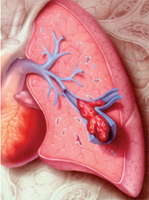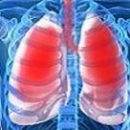Lung infarction is a very formidable disease, in severe cases capable of bringing instant death. It occurs not as rare, and therefore it is important to know his signs to deliver a person to the hospital if necessary. Read the details in the article.
Content
Causes of Easy Infarction Development
Lung infarction is a disease that develops as a result of blockage of vessels that feed the light thrombus. At the same time, the thrombus may form both directly in the lung vessels (thrombosis) and in other vessels and even in the heart. If the thrombus breaks off, it can block the clearance of the arteries in light. This process is called embolism.
Surgical interventions, postpartum period, heartbell disorders, especially arrhythmia, bone fractures, malignant tumors, long-term bedding. Closing the lumen of the vessel Trombum leads to an increase in pressure in the pulmonary artery and contributes to the hemorrhage into the pulmonary fabric. Then bacteria can penetrate into the affected area, resulting in inflammation.
 The manifestations of the disease and their severity are determined by the size, location and number of vessels closed with blood closures, as well as accompanying diseases of the lungs and hearts.
The manifestations of the disease and their severity are determined by the size, location and number of vessels closed with blood closures, as well as accompanying diseases of the lungs and hearts.
The most frequent signs of the lung infarction:
- suddenly emerging or sharply intensified shortness of breath,
- cough with mucous or bleeding wet,
- Breast sharp pain,
- Skin pallor often with ash tint,
- Summary of lips, nose, fingertips
- Disturbance of the heart rhythm (pulse increase, the appearance of fliccific arrhythmia),
- Reduced arterial pressure,
- Increase body temperature.
Most often a person's condition is very bad, and in severe cases it dies almost instantly.
Diagnostics and treatment of lung infarction
In case of suspicion of a mild person's heart attack, you must be delivered to the hospital as soon as possible. There he will make an X-ray snapshot of the chest, possibly with the obscurity of the vessels with a special contrast agent. In addition, ECG has importable in diagnosis.
For the treatment of lung infarction, fibrinolytic (solvent thrombus) means, as well as funds that improve blood properties so that the damaged area is powered as much as possible. After the danger of life has passed, use antibiotics and other means of treating lung inflammation.









